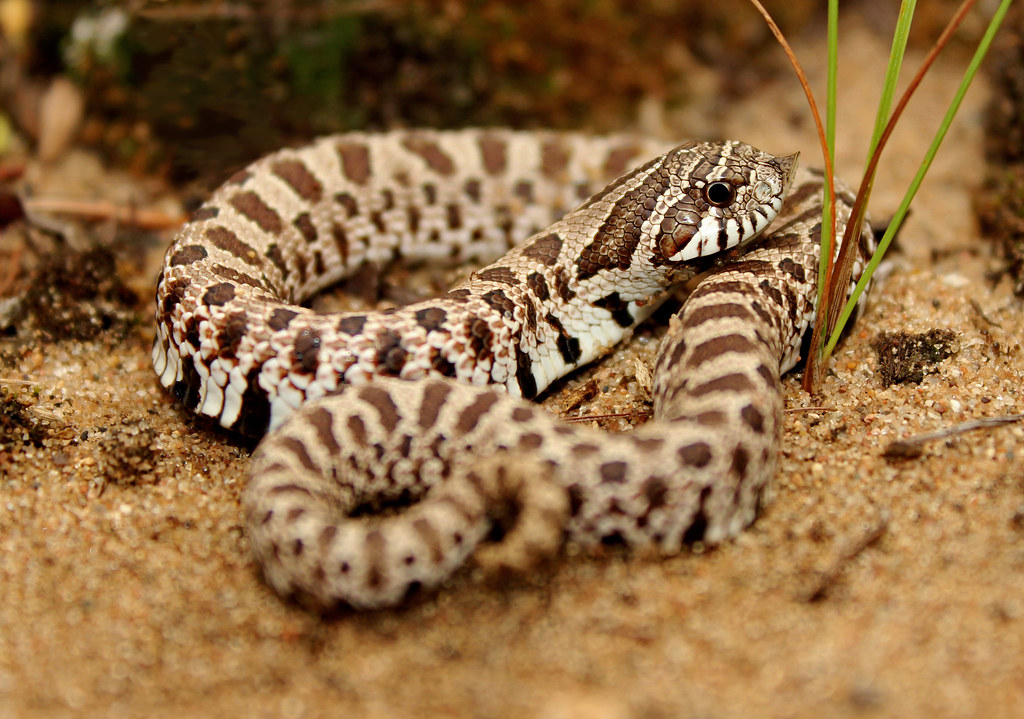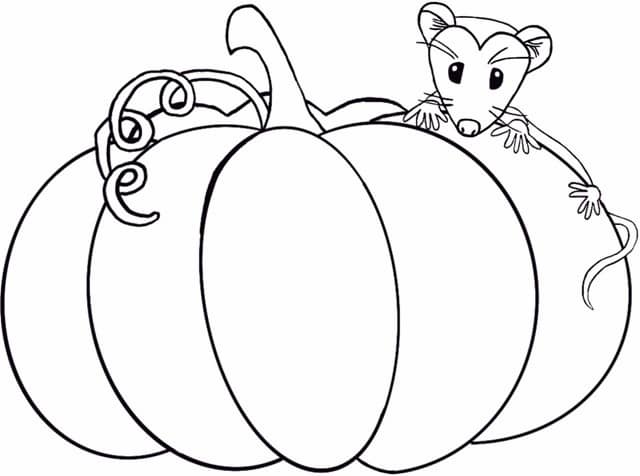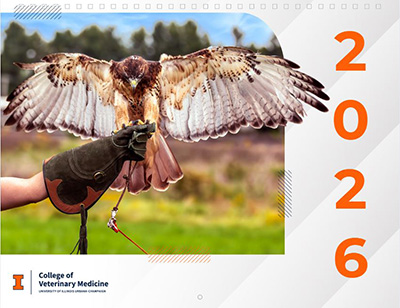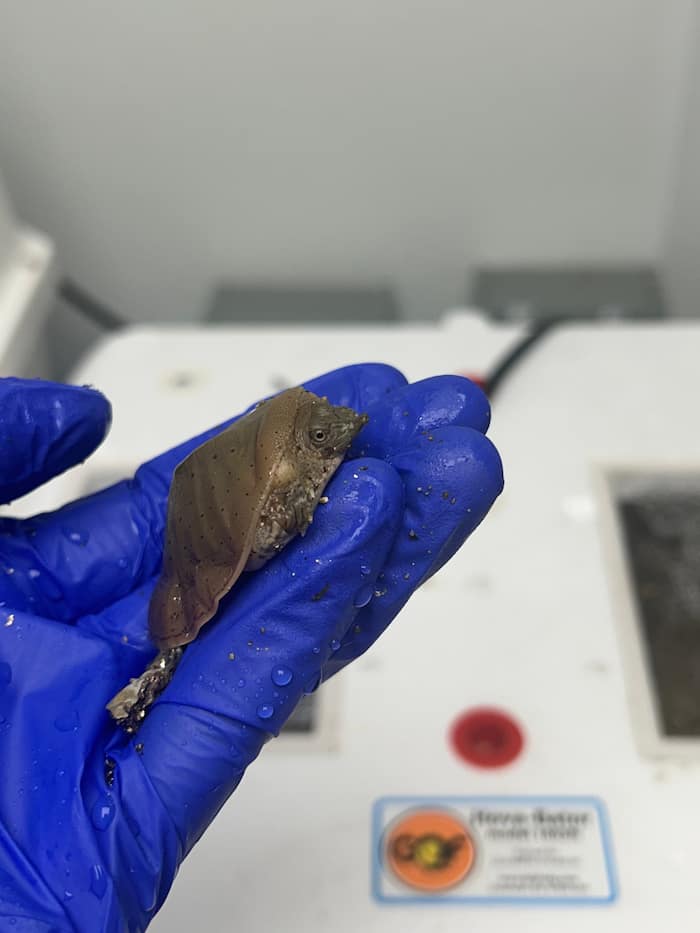One of the most interesting species of snake in my opinion is the hognose snake, and we have a type of hognose native right here to Illinois! The plains hognose snake (Heterodon nascius) can be found as far north as Canada, as far east as Illinois, as far south as Mexico, and as far west as Wyoming!
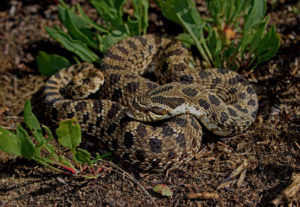
Several features make this snake so fascinating, including its appearance, feeding style, and defense mechanisms. This is a smaller snake, with females not usually exceeding 3 feet long. Adult males are about half the size of adult females. They are tan with brown blotches on their back and black on their belly. They also are more stout or round than most of the North American snakes in the same family (colubrid) like corn snakes or garter snakes. The hognose snake gets its name from its characteristic “shovel nose” orupturned rostral (nose) scale that makes them well adapted to digging.
As for feeding, they are not constrictors. This means they do not squeeze their prey like boas or pythons do. Instead, they have large rear fangs with a mild venom that is toxic their prey, which largely consists of toads. This venom is not dangerous to humans.
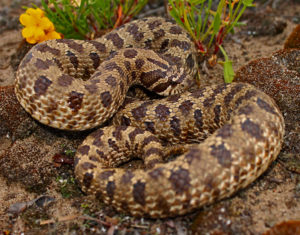 Hognose snakes display a unusual, and rather dramatic, defense mechanisms as a behavioral adaptations. When scared or threatened, these snakes will first hiss and flatten their neck to look and sound intimidating. Then, they will secrete “musk” which is similar to skunk spray or a dog releasing its anal glands. As a last resort, they will flip upside down, open their mouth with their tongue hanging out, and play dead.
Hognose snakes display a unusual, and rather dramatic, defense mechanisms as a behavioral adaptations. When scared or threatened, these snakes will first hiss and flatten their neck to look and sound intimidating. Then, they will secrete “musk” which is similar to skunk spray or a dog releasing its anal glands. As a last resort, they will flip upside down, open their mouth with their tongue hanging out, and play dead.
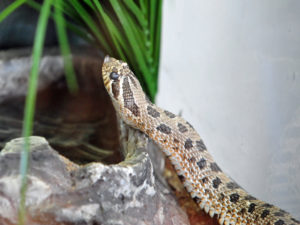
While keeping and breeding these snakes in human care is becoming more popular, their wild populations are suffering. This is not due to the reptile pet trade, but due to loss of the grassy or sandy plains they like to call home. Plains hognose snakes are considered endangered in Illinois. If you happen to see one in the wild, please leave it alone and let it go about its business!
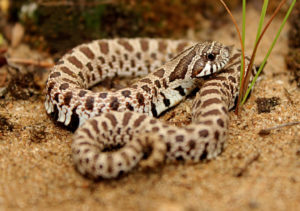
Hognose snakes are only one of several species of snakes native to Illinois. Just like the hognose, most of these snakes are harmless and are necessary for a healthy ecosystem and rodent (and other prey) control. If you find an injured snake, please contact us at the Wildlife Medical Clinic so we can help!
This article was written by Caralee Stover, Class of 2023.

